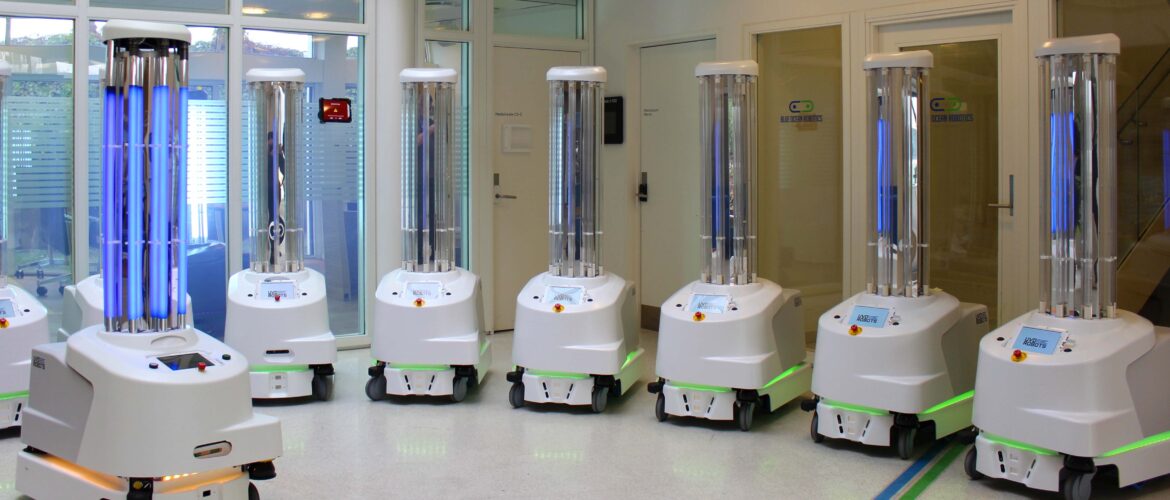Introduction To Green Cleaning Robots

Overview
Nowadays, the coronavirus pandemic has changed the way we live. The absolute best way of dealing with this disease is to not just get covid-19 in the first place. By now, people had had all the strategies for doing this drilled into our skull- washing our hands, keep away from large groups of people, stay home when sick, wash your hands, avoid travel, and please do not forget to wash your hands.
Many places have been chosen to be avoided during this pandemic, and on top of this list are hospitals, because all the sick people go. But for people who works in hospitals and sick people themselves, there’s no other option. To prevent the spread of coronavirus and all other diseases through hospitals and other crucial places, keeping surface disinfected is incredibly important, but its also dirty, dull, and dangerous. That’s why this task is an ideal task for autonomous robots.
UVD Robots
One of the best autonomous robots for this job is UVD robots. This type of robot can disinfect patient rooms and operating theaters in hospitals, and other places as well. Its able to disinfect anything you point them at- the robot is a mobile array of powerful short wavelength ultraviolet-c lights that emit enough energy to literally shred the DNA or RNA of ant microorganisms that have the misfortune of being exposed to them.
How it works
UV disinfecting technology has been around for a century, and it’s commonly used to disinfect drinking water. The robot consists of a mobile base equipped with multiple lidar sensors and an array of UV lamps mounted on top. To deploy a robot, you drive it around once using a computer. The robot scans the environment using its lidars and creates a digital map. You then annotate the map indicating all the rooms and points the robot should stop to perform disinfecting tasks.
After that, the robot relies on simultaneous localization and mapping (SLAM) to navigate, and it operates completely on its own. It’ll travel from its charging station, through hallways, up and down elevators if necessary, and perform the disinfection without human intervention before returning to recharge. For safety, the robot operates when people are not around, using its sensors to detect motion and shutting the UV lights off if a person enters the area. It takes between 10 and 15 minutes to disinfect a typical room, with the robot spending 1 or 2 minutes in five or six different positions around the room to maximize the number of surfaces that it disinfects. The robot’s UV array emits 20 joules per square meter per second (at 1 meter distance) of 254-nanometer light, which will utterly wreck 99.99 percent of germs in just a few minutes without the robot having to do anything more complicated than just sit there.
References
https://aricjournal.biomedcentral.com/articles/10.1186/s13756-020-00878-4
